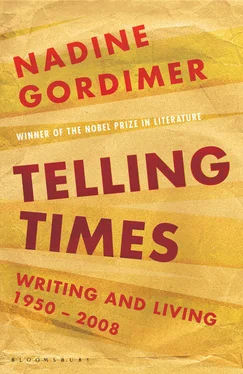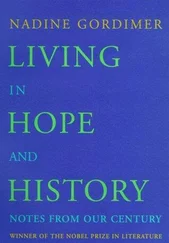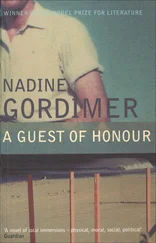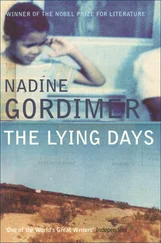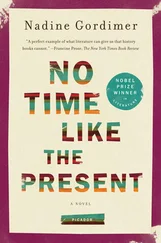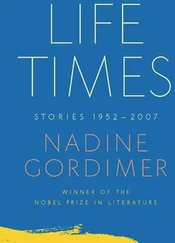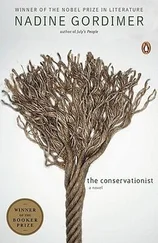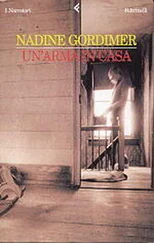And so now I should not have been surprised that you, writing to me, are preoccupied by the question of violence entering deeply into your awareness, just as it has made its way into mine. This is a ‘recognition’ between two writers; but it goes further. It is the recognition of writers’ inescapable need to read the signs society gives out cryptically and to try to make sense of what these really mean.
I must tell you that when I began to write The House Gun it came to me as the personal tragedy of a mother and father whose son, in a crime of passion, murders their human values along with the man he kills. The parallel theme, placing their lives in the context of their country, the new South Africa, was that they — white people who in the past regime of racial discrimination had always had black people dependent upon them — would find themselves dependent upon a distinguished black lawyer to defend their son. That was going to be the double thesis of my novel. But as I wrote (and isn’t it always the way with us, our exploration of our story lures us further and further into the complexity of specific human existences?) I found that the context of mother, father and son was not existentially determined only geographically and politically; there was the question of the very air they breathed. Violence in the air; didn’t the private act of crime passionel take place within unconscious sinister sanction — the public, social banalisation of violence?
You make the true and terrible observation ‘all the children of the world, in their perception and consciousness of their era, are the mirrors upon which the massive universal violence is reflected’. You are rightly most concerned about the situation of children, and I’ll come to that, but first I must comment on the extraordinary, blinkered attitude to violence which I have just recently been subjected to rather than encountered, in Europe and the United States.
Whenever I was interviewed, journalists would propose the question of violence in South Africa as an isolated phenomenon, as if street muggings, burglaries, campus ‘date rapes’, brawls resulting in serious injuries between so-called sports matches were not part of everyday life in their countries.
Let me admit at once that South African cities have at present a high place on the daunting list of those with the worst crime rate in the world. Some South American cities have been prominent on that list so long that this has come to be regarded complacently by the rest of the world as a national characteristic, a kind of folk custom rather than a tragedy. Conversely, South Africa’s violent crime is seen as a phenomenon of freedom — interpreted among racists everywhere (and there are still plenty) as evidence that blacks should have been kept under white hegemony for ever.
The reasons for the rise of crime in South Africa, however, are not those of black people’s abuse of freedom. They are our heritage from apartheid. What the world does not know, or chose not to know, was that during the apartheid regime from 1948, state violence was quotidian and rampant. To be victims of state violence was the way of life for black men, women and children. Violence is nothing new to us; it was simply confined to daily perpetration against blacks. They were shut away outside the cities in their black townships at night, or permanently banished to ethnically defined territory euphemistically known as ‘homelands’, from which only male contract workers were allowed to come to the cities. This was how urban law and order was kept. Violence, and the desperate devaluation of life it called forth, was out of sight. Now that the people of our country are free in their own country to seek work and homes wherever they please, they flock to the cities. But the cities were not built for them; there is no housing for such vast numbers, and their presence on the labour market has swelled the ranks of the unemployed enormously. Their home is the streets; hunger turns them, as it would most of us who deplore crime on full stomachs, to crime, and degradation degenerates into violence. These are the historical facts that make the reasons for violence in South Africa exceptional. Economic development has the chance to change this deal with violence, here, although it is not a total solution, to a significant extent.
As for the matter of guns as domestic possessions along with the house cat — while I was in the USA two schoolboys aged eleven and thirteen shot and killed several classmates and their teacher, and while I was in Paris a schoolboy shot and killed his classmate. Why did these children have access to guns? Where did they get them? The American children took the guns from the house of their grandfather; the French child from that of his father. The guns were simply there, in these family homes, commonplace objects, evidently not kept under lock and key, if they had any legitimate place at all in household equipment. I’ve just read American statistics revealing that a gun in the house is forty-three times more likely to kill a member of the household than an intruder. And now you tell me that a Japanese boy killed a companion and hung up the victim’s head in public; a boy fatally stabbed his teacher; an old man was beaten to death by two girls; and a father was killed by his son and the son’s friend.
This brings us to what is the ultimate responsibility of adults in your country, in mine, in the whole world: why could children cold-bloodedly kill? What has made them horrifically indifferent to the pain and death of others, so that they themselves are prepared to inflict these? What has happened to their ‘tender years’?
Setting aside the particular experience of South Africa, I think the woman who challenged you, citing environmental causes — an environment created entirely by the power and will of adults — was correct. If you look back at your own childhood experience, Kenzaburo, and I look back at mine, surely we shall see how our morality, our humanity was distorted by the agenda of adults, something we had to struggle with and shed by our own efforts as we grew: a confirmation of your conviction that there is the ‘power of recovery inherent in children themselves’, yes. You were brainwashed — no less — into believing the immortal worth of the Emperor was such that you must be prepared to kill yourself at his command. I was brainwashed — no less — into believing that my white skin gave me superiority and absolute authority over anyone of another colour.
Children are not subjected to this sort of evil conditioning today. Then what is it, in countries dedicated to peace and democracy, reformed in aversion to the authoritarian cruelties of the past, that makes violence acceptable to children? I know it’s easy to lay responsibility on the most obvious — the visual media, television and electronic games, now also part of home furnishings. But the fact is that these household presences have become the third parent. They raise the child according to a set of values of equal influence to that of the biological parents. The power of the image has become greater than the word; you can tell a child that a bullet in the head kills, a knife in the heart kills. The child sees the ‘dead’ actor appear, swaggering in another role, next day. This devaluation of pain, with its consequent blunting of inhibitions against committing violence, has become, with the acts of glamorous gangsters, mortal-ray-breathing heroes of outer space, the daily, hourly formation of youthful attitudes. It is hauntingly clear to me that these children who kill do not have — it’s like an atrophied faculty — the capacity to relate to pain and destruction experienced by others. I think this is what has happened to the ‘inner psyche of these juvenile delinquents’ you speak of.
Читать дальше
